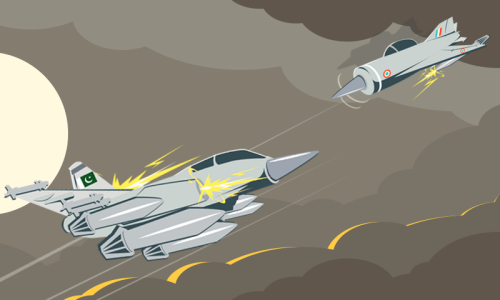Kinnow exports will begin from December 1 and exporters are confident that they can meet the target of 200,000 tonnes that matches last year’s performance.
Their optimism is based on higher production — 1.9 million tonnes this year against last year’s 1.8 million tonnes — and the possibility of increased exports to India and Indonesia.
Traditionally, only 10 per cent of citrus fruits produced in the country are exported for various reasons including huge post-harvest losses of up to 40 per cent. Last fiscal year, the target was set at 300,000 tonnes but exporters could not achieve it chiefly due to increase in import tariff by Iran and refusal by banks to provide export refinance after the US imposed trade sanctions on Tehran.
Exporters claim they can increase export volumes if the government provides them with some incentives in setting up processing plants besides lowering air freight and tax rates.
In the mid-2000s, some leading exporters had set up new processing plants in Punjab—the main centre of kinnow production—and along Super Highway close to port city of Karachi. But generally, from ensuring better yield to picking of fruits and from grading to polishing and packaging —the entire cycle of activities suffer due to the absence of modern technology. As a result, not only do volumes of exports remain low as a percentage of total production but exporters also fail to fetch higher per unit prices.
Production of citrus fruits had hit a high mark of 2.3 million tonnes in FY08, but fell gradually to 1.8 million tonnes in FY12 due to a variety of factors including super floods of 2010, inability of orchard owners to invest in yield-enhancing agronomic practices and a growing tendency among them to invest more in raising more profitable cash crops.
Last year, production of kinnow in Sargodha had declined due to a disease called Scab. But this year the crop is disease-free.
Besides, the crop in Sahiwal is also estimated to be higher due to adoption of better agronomic practices.
“It’s not only the optimistic production outlook (that gives exporters confidence about meeting exports target). We also anticipate huge demand from India and Indonesia,” opined an executive member of the Fruit Exporters Association. But, he said, that grabbing a big share of kinnow exports in Indonesian market was not possible without making our exports competitive in view of growing competition from China. Exporters say that in recent past China has managed to win huge export orders of citrus fruits from Indonesia due to low pricing. “The quality of our kinnow is much better than those of China but their fruits are cheaper because of low input cost.”
Chairman, Pakistan Fruit and Vegetable Exporters Association, Waheed Ahmed fears that exports of citrus fruits to Iran may be affected this year due to US sanctions. He thinks that exports to Russia may also stay lower because some exporters had also violated Russian quarantine and hygienic standards.
It is in this backdrop that Russian officials are here to see for themselves the procedures in place for ensuring the quality of exportable fruits and vegetables. Complaints about standardisation of Pakistani fruits and vegetables had prompted Russian authorities to warn Pakistan in June to sort out the issue.
Apart from Indonesia, Iran and Russia, Ukraine is also a big market of Pakistani kinnows. And exporters believe that if quarantine and standardization issues are sorted out with Russia immediately, Russian and Ukrainian markets together would consume half of the total exports. Exports to Middle Eastern states, including Saudi Arabia and the UAE, are expected to increase in the current season due to deeper penetration of leading companies into these markets.
Citrus fruits, more specifically kinnows (earning $50-60 million), are amongst the top foreign exchange earners in the category of fruits. Whereas mangoes bring in a big amount of foreign exchange in the summer, kinnows dominate fruit exports during winter.. But exporters say this year’s earnings could go up to $100-$110 million owing to higher per-unit prices for the supply of supreme quality of fruits in retail packing. They are also pinning hopes on sizable exports to India.
Japan could also become a big market for Pakistani kinnow but exporters lament lack of official support in meeting the quarantine standards set by Japanese authorities for perishable items. Dr Muhammad Tariq Bucha, president of Farmers Associates Pakistan (FAP), points out that a lack of timely and proper guidance on kinnows’ grading by Horticulture Development and Export Company also perpetuates quality and standardisation issues in export markets.
Ahmad Jawwad, a leading fruit exporter and member of export committee of Islamabad Chamber of Commerce & Industry, says the preferential trade agreement signed between the two countries is expected to give a real boost to kinnow exports from Pakistan to Indonesia. After the PTA, Indonesia’s import tariff on Pakistani kinnow has fallen from 25 per cent to zero. Jawwad and other exporters demand that the Federal Board of Revenue and the ministry of commerce must grant special waivers for Indonesian exports in tax and logistics tariff. Exporters estimate that exports of kinnow to Indonesia would reach 40,000 tonnes during this season. —Mohiuddin Aazim











































